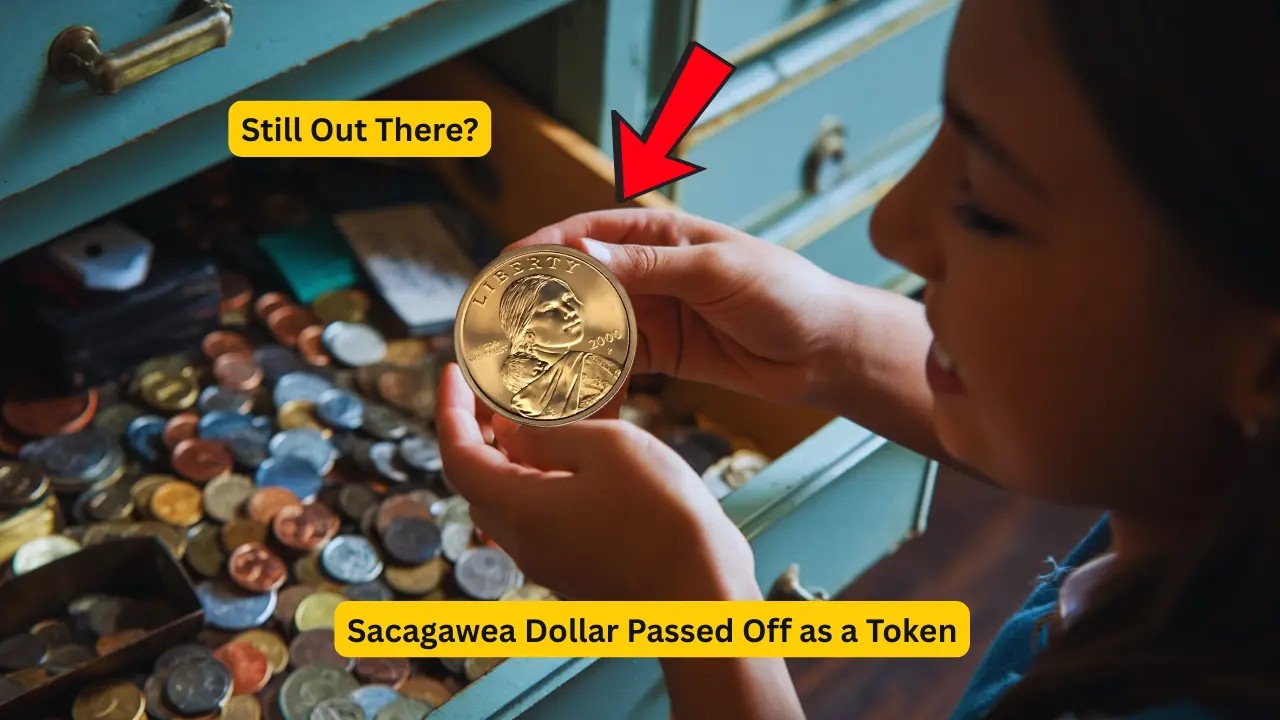For years, a worn Sacagawea dollar sat unnoticed in a family’s coin jar, often mistaken for a game token or arcade coin. It had been used casually, handled like spare change, and even tossed in with tokens from local arcades.
But when a family member recently decided to sort through old coins, what looked like an ordinary dollar turned out to be a rare and highly valuable collector’s item — now appraised at a jaw-dropping $950,000.
A Simple Mistake with a Shocking Ending
The story began when a teenager in Oregon was cleaning out an old drawer that held a mix of outdated tokens, foreign coins, and miscellaneous pocket change. Among them was a Sacagawea dollar — easily dismissed due to its golden color and common presence in circulation back in the early 2000s. The teen almost threw it out, assuming it was a generic token from a local arcade or transit system.
But something about the coin’s weight and design made them hesitate. They turned to an online coin forum for opinions, and the response was immediate: “Get this coin appraised. It may not be a token at all.”
What Makes It So Valuable?
What was once brushed off as a token was, in fact, an incredibly rare 2000-P Sacagawea dollar with a striking minting error. This specific coin was part of the famous “mule” error batch — a rare mistake where the coin was struck using a Sacagawea dollar obverse (front) and a Washington quarter reverse (back).
Only a few such error coins are known to exist, and they are among the most coveted finds in modern U.S. coin history. In numismatic circles, this type of error is considered the holy grail of minting mistakes.
Experts say the combination of rarity, historical context, and collector demand drove the coin’s value up to a near-million-dollar figure.
Professional Appraisal and Market Value
After the family had the coin professionally authenticated by third-party graders, it was certified as one of the ultra-rare mule errors. Within days, collectors and auction houses were reaching out with six- and seven-figure offers.
The coin was eventually listed for auction with a reserve price of $750,000. Bidding quickly escalated, and the final hammer price stunned even seasoned collectors — $950,000.
Why It Was Mistaken for a Token
The Sacagawea dollar’s golden tone and smooth edges often led to confusion, especially since it lacked the distinctive reeded edges of traditional quarters. Many people, especially younger generations unfamiliar with early 2000s coins, confuse these dollars with tokens or promotional pieces.
According to numismatic experts, dozens of rare U.S. coins have likely been overlooked due to similar assumptions. Some may still be in circulation, hiding in plain sight.
Could There Be More?
This discovery reignites interest in checking everyday change, especially older coins sitting in drawers, jars, and even car cup holders. Numismatists believe there may be a handful of other mule errors still out there, unknowingly passed around in transactions or stored away as keepsakes.
The U.S. Mint never intended for these coins to circulate, and their accidental release into public hands makes them exceptionally valuable.
Final Thoughts
In a world where most loose change feels obsolete, stories like this prove that treasure can still be found in the most unexpected places. A coin once thought to be a worthless token ended up changing a family’s financial future.
The next time you come across a Sacagawea dollar or any odd-looking coin, take a moment to look twice. As this Oregon family learned, it could be worth more than you ever imagined — maybe even $950,000.




